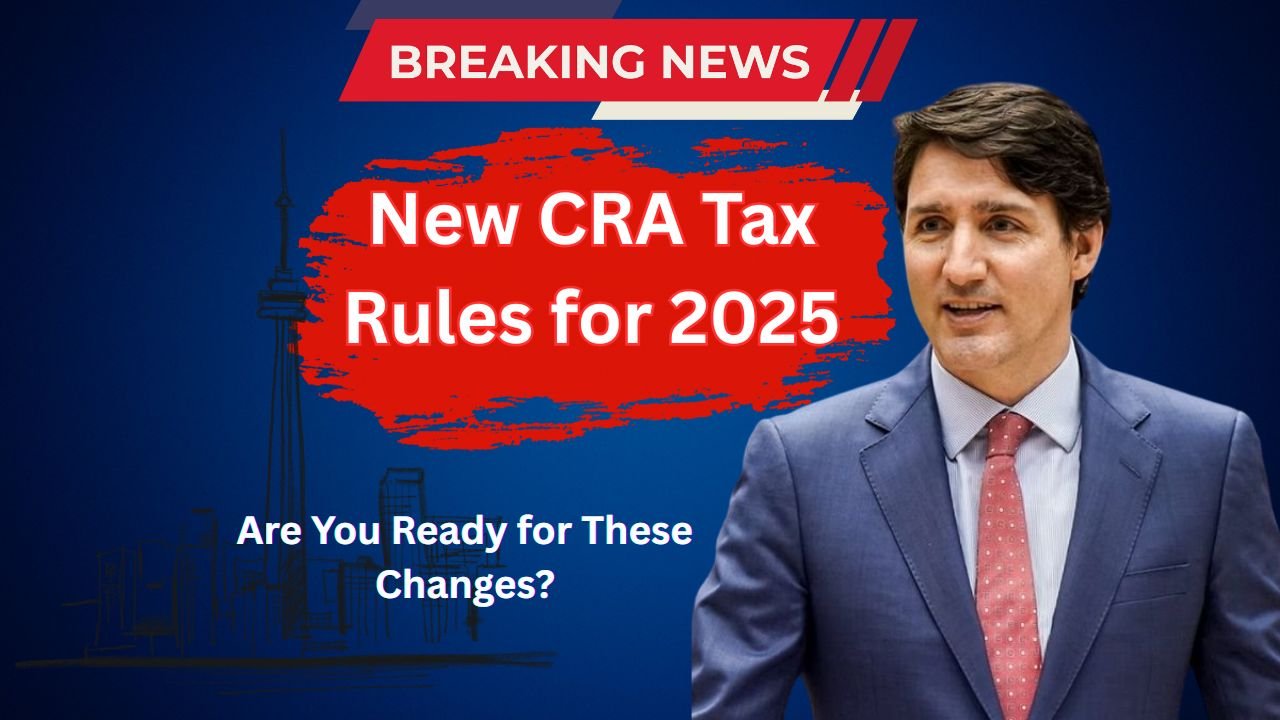The CRA’ Suggested significant changes to the tax system are to come into effect in the year 2025. The changes, if made, will undoubtedly aim for efficiency in taxpayer-fairness and, thus, support any financial security for Canadians. A retiree, small-business owner, or an average taxpayer must seriously consider how these changes may affect his or her personal finances.
The guide will carry on to describe some of the more important tax changes in 2025 and some of the actions you could take to prepare yourself ahead of time.
1. Updated Federal Tax Brackets and Marginal Rates
A federal income tax bracket modification reflects one of the more eagerly awaited changes. The CRA adjusts the tax bracket every year according to inflation, and the threshold amounts are expected to increase for 2025.
The following is a report on anticipated federal tax brackets for 2025 (inflation-indexed):
- 15% on taxable income earned up to the first $56,000;
- 20.5% on income earned above $56,000 to $112,000;
- 26% on income earned above $112,000 to $170,000;
- 29% on income earned above $170,000 to $245,000;
- 33% on income earned above $245,000.
These new brackets emphasize relief to middle-class Canadians by allowing for more income to evade a higher tax rate.

2.Personal Amount Heightened
The Basic Personal Amount, that is the income an individual earns before paying any federal income tax, is increased again in the year 2025.
The BPA will rise to $16,050 in 2025.
This increase is taken in association with the commitments made by the federal government to relieve the tax burdens imposed on the citizens and also for the benefit of low and moderate income earners.
3. Revisions to the CWB
The CWB is also going to be increased. Eligible people will get automatic advance payments of the CWB through the CRA to receive assistance throughout the year. Individuals and families will now be getting quarterly advance payments. Also expected to be raised would be the income thresholds and maximum benefit amounts.
These changes would help working Canadians meet day-to-day expenses and reduce income inequality.
4.Introduction of the Home Buyers’ Savings Account (HBSA)
The First Home Savings Account (FHSA) came into being in 2023 contra Est planned for integration into CRA systems by 2025 for efficient reporting and access to the taxpayer.
The salient features are:
- Tax-free contributions up to $8000 per year (with a lifetime limit of $40,000)
- Deduction from the taxable income (like an RRSP)
- Tax-free withdrawals for a first home (like a TFSA)
- This hybrid account is particularly beneficial for young Canadians trying to enter the housing market.
5.Improved Climate Action Incentive:
The cash rebate under CAI, which has to do with carbon tax relief, will rise for 2025 along with the increase in carbon pricing and energy prices.
Estimated amounts for CAI rebate in 2025:
$1,000+ for families of four in those provinces where the federal backstop applies
- Alberta
- Saskatchewan
- Manitoba
- Ontario
The CRA goes on to distribute those quarterly payments through either direct deposit or by cheque while compensating for the rising fuel prices within these households.
6.New Digital Services, Tax Compliance in Crypto
The CRA has tightened its rules relating to digital service income and crypto tax reporting, as digital assets and online platforms proliferate.
If you:
- Traded cryptocurrencies,
- Carried on a digital business;
- Made income out of YouTube, TikTok, Etsy, or Amazon FBA,
You can expect to report stricter standards, as well as mandatory reporting of digital asset holdings greater than $50,000, and possible audits or reviews of high-income earners stemming from digital platform use come 2025.
Confirm that you correctly report all digital earnings in your tax return.
7.RRSP and TFSA Limits Increased
Another benefactor is increased contribution in the RRSP and TFSA accounts for the benefit of Canadians.
In 2025: The RRSP limit will be as much as $32,500 (i.e., 18% of earned income).
In 2025: The TFSA limit has been increased to $7,200.
8.Small business tax adjustments.
The increase gives more tax-free and tax-deferred ways to save, enabling Canadians to grow their wealth even better.
For small businesses and self-employed persons, the limit pertaining to business deduction will increase:
The limit is expected to grow to $550,000 with respect of active business income of a taxpayer.
In addition, the capital cost allowance rules have also speeded up the deduction on investment for clean energy and technology upgrade making it easier for small businesses to come into modernity while improving their tax situation.

9.Non-Compliance is Now Subjected to Stronger Penalty Enforcements
Rules will keep becoming tighter under the CRA to combat all in the realm of tax avoidance and fraud. Since 2025, the stricter penalties will now be on:
Late filing;
Under-reporting of income;
Not reporting foreign properties.
Taxpayers must be aware of these changes on an ongoing basis and comply with the new standards.
How Canadians Can Prepare for CRA Tax Changes in 2025
Here is what Canadians must do to stay ahead:
Review your income sources: Understand how CRA’s new brackets affect your taxes.
Maximize contributions: Early contributions to RRSPs, FHSAs, and TFSAs.
Remain compliant: Report all types of income, including digital and foreign income.
Use CRA’s My Account portal: Online personalized benefit details, contribution limits, and tax slips.
See a tax adviser: Consult an expert to know how changes may affect you, which will substantially reduce liabilities and increase returns.

Final Thoughts
Opportunities and responsibilities accompany the CRA tax changes of 2025. Increased tax-free thresholds and more benefits will serve to relieve many Canadians, while stringent compliance measures and new regulations surrounding digital income and crypto will require their vigilance. As any taxpayer-whether salaried, freelance, investing, or retired-determining the new way forward through information and proactive thinking will be the only boundary in countering these new tax realities.
FAQS:
Which Significant CRA tax changes for 2025?
Major changes include updated federal tax brackets, higher amounts allocated under the Basic Personal Amount, enlarged payments of the Canada Workers Benefit, full rollout of the First Home Savings Account (FHSA)
What is the Basic Personal Amount in the year 2025?
By the 2025 tax season, the Basic Personal Amount (BPA) will increase to $16,050, enabling Canadians to earn significantly more before facing any federal income tax on their budgets.
Tax brackets are going up or down in the year 2025?
Of course, tax brackets will change upward with inflation, meaning that much of your income may be subject to lower rates than in previous years, potentially lowering your tax bill.

